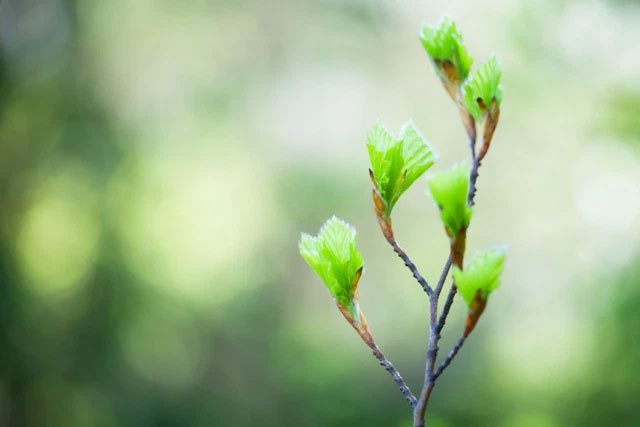Scientists warn spring could come 10 days earlier before 2100
A decrease in the total number of rainy days is causing plants to flower earlier in northern climates, leading to spring arriving earlier than expected, say researchers from Ohio State University.
Their research shows that with current rainfall, young leaves will grow 1-2 days earlier per decade.

Warmer temperatures affect spring start time
While previous studies have focused on how warmer temperatures due to climate change will affect the timing of spring onset, this is one of the first to focus on precipitation.
Desheng Liu, co-author of the study, said: "Scientists mainly looked at how temperature affects when young leaves bud, and if they look at rainfall, it's just the total amount. But the total amount. Rainfall is not necessarily the most important thing, but the frequency of rain."
Why does precipitation affect the timing of spring onset?
According to the researchers, there are two main reasons why the reduced rainfall leads to the earlier arrival of spring.
- First, trees and plants receive more solar radiation during the year when there are fewer rainy days, stimulating leaf growth.
- Monday fewer cloudy days also mean higher daytime temperatures and more sunlight that warms the ground and atmosphere. Nighttime temperatures then cool rapidly and there are no clouds to trap heat.
For the study, the scientists analyzed data from the US, Europe and China, including the annual leaf appearance date and the number of rainy days per month. They also studied satellite images from 1982 to 2018, recording when vegetation started to turn green.
The analysis revealed that as rainy days dwindled over the years, spring arrived earlier in most areas of the Northern Hemisphere.

Spring comes earlier in most areas of the Northern Hemisphere.
Based on the findings, the researchers calculated that a future decline in rainfall would also mean spring arriving 10 days earlier by 2100.
"We can expect a spring earlier in the future than what current models tell us. This contrasting effect occurs early in life," said study co-author Jian Wang. The year makes the trees think that it is spring and will start to leaf earlier and earlier."
If spring starts earlier, it could trigger a domino effect and impact entire ecosystems, including other wildlife.
Professor Ulf Buntgen, a researcher from the University of Cambridge's Department of Geography and not involved in the study, said: "When plants flower too early, late frosts can kill them. But the risk remains great. than when it changes the ecosystem".
Plants, insects, birds and other wild animals have evolved together and created synchronicity throughout their entire developmental stages. A certain plant that flowers will attract a specific type of insect, a particular type of bird, etc.
But if one species is more responsive than the other, the risk of a lack of synchronicity could put species in crisis if they don't adapt quickly enough.
- Spring comes earlier because of climate change
- Spring can come earlier with North American forests, increasing CO2 absorption
- Children born in the Winter - Spring season know more cows
- Spring conjunctivitis: Causes, symptoms and treatment
- Spring in the Department of Astronomy
- Why know spring flowers?
- What is spring 2020?
- Gastrointestinal disease is susceptible in spring
- An odd episode in spring
- China started the 'spring': 3 billion trips within the next 40 days to go home for Tet
- Marvel at fish that can live 6 days on land
- When does the spider fly?
 Why do potatoes have eyes?
Why do potatoes have eyes? 'Tragedy' the world's largest carnivorous life: Death becomes ... public toilet
'Tragedy' the world's largest carnivorous life: Death becomes ... public toilet Tomatoes were once considered 'poisonous' for 200 years
Tomatoes were once considered 'poisonous' for 200 years Detecting microscopic parasites on human face
Detecting microscopic parasites on human face Winter is coming back: Near the end of March there will be a new cold spell, at a special time!
Winter is coming back: Near the end of March there will be a new cold spell, at a special time!  Spring conjunctivitis: Causes, symptoms and treatment
Spring conjunctivitis: Causes, symptoms and treatment  Springs burn like oil in Azerbaijan
Springs burn like oil in Azerbaijan  Google Doodle reminds you of the Spring Equality Day of 2019
Google Doodle reminds you of the Spring Equality Day of 2019  The origin and meaning of Easter
The origin and meaning of Easter  This year has been the earliest spring season since 1896
This year has been the earliest spring season since 1896 